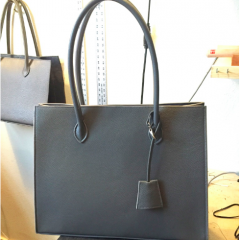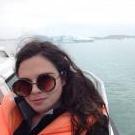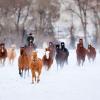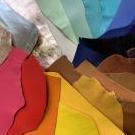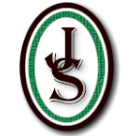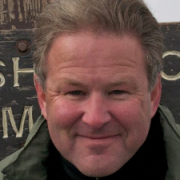-
Content Count
3,204 -
Joined
-
Last visited
About RockyAussie
-
Rank
Leatherworker.net Regular
Contact Methods
-
Website URL
https://wildharry.com.au/
Profile Information
-
Location
Rockhampton Queensland Australia
-
Interests
improving skills
LW Info
-
Leatherwork Specialty
Saltwater crocodile leathergoods
-
Interested in learning about
developing metal accessories for leatherwork
-
How did you find leatherworker.net?
google
Recent Profile Visitors
23,981 profile views
-
RockyAussie started following Leather cutting jig updated, Letter Stamping, TandyPro Strap Cutter modifications and and 1 other
-
This post I did awhile back may help. I did make the jig in it for going over belts but it could easily be made to go over flat leather as well. Main advantage is that it can be adjusted to whatever stamp size you want and hold firmly in position at the same time.
-
I think you may still have too much hanging down into the area where it will get caught. The other thing I am not sure about is whether the plastic will have enough back weight to stay down firmly. Only testing will show this I guess but be ready for the leather to get caught right at the start. (Its a bitch if it does) Also extra sharp knives help to avoid it but do not always do such a nice cut as semi sharp knives.
-
Although these pics look different they work the same in that they go either side of the blade and held down by the weight. - Note that some fingers sitting in the middle on the wide gaps may be better than putting in foam rubber spacers as I did in this case.
-
No not a waste of time at all. You are definitely on the right track doing as you have. Done right you will not need any washers or spacers at all. You will need to make sure you DO NOT have any of the finger low enough to catch on the leather. Cut the groove for the blade up fairly high to enable easy lifting and moving across when changing size widths. I will load a couple of pics of one of my old ones which should help to confirm you are on the right track asap.
-
COWBOY CB 4500/441 Stitch length increment fix
RockyAussie replied to RockyAussie's topic in Leather Sewing Machines
Good looking end result there @CdK every little bit helps. Magnet attached screw driver rack I assume? -
COWBOY CB 4500/441 Stitch length increment fix
RockyAussie replied to RockyAussie's topic in Leather Sewing Machines
@1hpThat is a nice neat looking job and looks a lot better than my effort. Worth the exercise either way though. I think from memory for every 3mm extra in height you move the knob one click to keep the same stitch length. -
Table Top Questions for Cylinder Arm Machines
RockyAussie replied to kgg's topic in Leather Sewing Machines
Nice looking job there Patrick. -
Cobra class 4: 346 bonded polyester thread? Help!
RockyAussie replied to DieselTech's topic in Leather Sewing Machines
Another point that seems to get missed is the foot presser adjuster has a large funnel shape in it. Guess why? A couple of drops can work wonders in there. Also some times the adjuster is not exactly straight with the shaft so it is worth checking by lifting the feet when doing the adjustment to feel for any binding. Doing the lock nut on it can also make it sit crooked and bind up. -
Cobra class 4: 346 bonded polyester thread? Help!
RockyAussie replied to DieselTech's topic in Leather Sewing Machines
Quite a few changes I would think are needed. First when you do thicker thread it often needs the bobbin backed to be looser. Try at least a 1/4 anticlockwise turn.(remember the lock screw needs to be loosened first) The needle should be size 26 for that thread and the s point or LR should look better than the d or tri points. If the needle is too small for the thread you will be getting flagging a lot more because the knot is having a hard time getting up in too small a hole. Lubricating the thread with some machine oil running through some foam can help as it transfers to the needle and makes it slip through better which includes making it easier to pull the knot up. The foot pressure marks would be better if the back foot were the double one that goes on both sides but the narrow set may not be the best in this application anyway. One tip I will offer is get a sample piece ready of the thickness you are wanting to stitch and keep backing of the foot pressure until the job starts to lift then take it down 2 or 3 turns. If You need to run the left foot only then you could do as I have done and tig weld a wider base to it as shown in the pictures.The wider base reduces marks by a lot. -
Good thinking on that setup.
- 11 replies
-
Table Top Questions for Cylinder Arm Machines
RockyAussie replied to kgg's topic in Leather Sewing Machines
Just checking if you know the dealers here make a stainless steel plate one that is not all that expensive. I could print you up a good one but I doubt it would be much cheaper. -
If you are wanting to do this as a business then this video may help. Skip to about the 5 minute mark to see a machine I have been using for 20+ years with out problems. Because I do a lot in crocodile leather I can not use burnishing methods so the rest of the video is about edge painting. Some wallets I've made can be seen in it.
-
Manual Strap Cutter Machine: Opinions/Recommendations
RockyAussie replied to DieselTech's topic in Leather Machinery
That part of the setup is a bit silly really. If the fingers were made out of something heavier (3mm or 1/8") and with a longer back section they would not need to be spaced and locked in place. The weigh at the back would let the front part ride against the cutter shaft. I have an old machine like that and to change position I just lift the finger forward and move it sideways to where I want it. 5 seconds to change each finger. -
Manual Strap Cutter Machine: Opinions/Recommendations
RockyAussie replied to DieselTech's topic in Leather Machinery
This video I did a little while ago could help you on this - https://youtu.be/Q3cVOtCNjEg?si=xrCJA5Rep8YEl89Y


